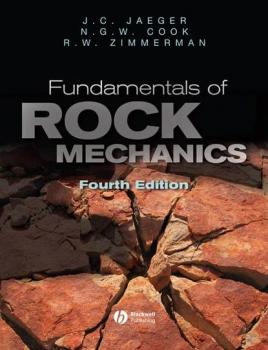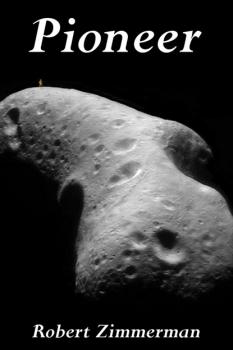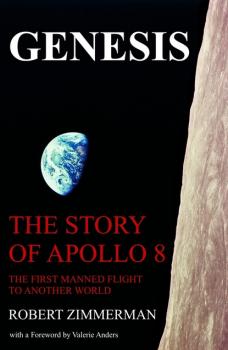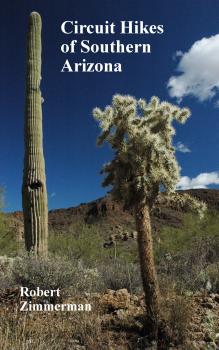ТОП просматриваемых книг сайта:
Robert Zimmerman
Список книг автора Robert ZimmermanАннотация
Widely regarded as the most authoritative and comprehensive book in its field, the fourth edition of Fundamentals of Rock Mechanics includes new and substantially updated chapters to this highly praised text. Extensively updated throughout, this new edition contains substantially expanded chapters on poroelasticity, wave propogation, and subsurface stresses Features entirely new chapters on rock fractures and micromechanical models of rock behaviour Discusses fundamental concepts such as stress and strain Offers a thorough introduction to the subject before expertly delving into a fundamental, self-contained discussion of specific topics Unavailable for many years, now back by popular demand. An Instructor manual CD-ROM for this title is available. Please contact our Higher Education team at [email protected] for more information. Reviews: “With this attention to detail, and rigorous adherence to clarity and exactness in description, this edition will consolidate the standing achieved by the earlier editions as a most authoritative and comprehensive book in its field. It will continue to serve as a leading reference work for geoscientists interested in structural geology, tectonics and petrophysics as well as for civil, mining and petroleum engineers.” (Petroleum Geoscience) «…I consider this book to be an invaluable reference for studying and understanding the fundamental science at the base of rock mechanics. I believe this to be a must-have textbook and I strongly recommend it to anyone, student or professional, interested in the subject.» (Rock Mechanics and Rock Engineering) «An excellent book, very well presented, and is a must for the shelves of serious engineers and scientists active or interested in the fields of rock mechanics and rock engineering.... Highly recommended.» (South African Geographical Journal, 2008)
Аннотация
The time is 2183. Fifty-six-year-old Saunders Maxwell is a stubborn old space-farer who has spent his entire life in space. He has captained the Moon-Mars shuttle and led exploration missions beyond Mars. When he came to Mars in his forties he helped discover the water source that made the first American Mars colony possible.<br><br>Later he turned to asteroid mining, captaining a small ship and crew of about a half dozen on repeated trips to the asteroid belt, bringing back minerals or even small asteroids so that the Mars colony could harvest them for the needed resources.<br><br>Having just returned from one such four year mission, he and his pilot Harry Nickerson are heading back to Mars when, as they fly over the vast slopes of the giant volcano Olympus Mons, Maxwell spots this strange glint below, a glint that is not natural and should not be there.<br><br>When they land they discover something entirely unexpected and impossible, the body of man who had disappeared on a distant asteroid almost a half century before. Sanford Addiono had been on one of the first manned missions to the asteroid belt when he and a partner had vanished. Nothing was ever heard from them again. Even more baffling, two later missions to the asteroid from which they had been lost found that it was gone as well, no longer in orbit where it was supposed to be.<br><br>Now, 46 years later, Maxwell finds Addiono's body on the surface of Mars. How Addiono had gotten to Mars from a distant now-lost asteroid orbiting beyond Mars–without a spaceship–was a riddle that almost defied an answer.<br><br>That riddle was magnified exponentially by what Addiono had brought back with him. Among his effects was a six-fingered robot hand that had clearly been made by some alien civilization, along with a recorder and memo book describing what Addiono had seen.<br><br>Here was a mystery that would rock humanity, the first alien contact. And at that moment Saunders Maxwell decides that he is going to be the person to solve that mystery, even if it takes him through hell and back.<br><br>Unfortunately, that is exactly where that journey takes him.<br><br>Not that it matters. Saunders Maxwell is a typical human, and for humanity, the journey itself is really all that matters.<br><br>So now I stand on earthside shore,<br>And wonder what I am.<br>I must go out and find my home.<br>The journey's what I am.<br><br>Chorus:<br>O Pioneer! O Pioneer!<br>Where do you go from here?<br>O Pioneer! O Pioneer!<br>The stars are far too near.<br><br>-A folksong of Mars and the Moon
Аннотация
It was Christmas Eve 1968. And the astronauts of Apollo 8 – Commander Frank Borman, Jim Lovell, and Bill Anders – were participants in a mission that took them faster (24,000 mph) and farther from the earth (240,000 miles) than any human had ever traveled. Apollo 8 was the mission that broke humanity's absolute bond to the earth: it was the first manned vehicle to leave the earth's orbit. Confined within a tiny spaceship, the astronauts were aided in their journey by a computer less powerful than one of today's handheld calculators. Their mission was not only a triumph of engineering, but also an enduring moment in history. The words these three men spoke from lunar orbit reverberated through American society, changing our culture in ways no one predicted.
Аннотация
"Circuit Hikes of Southern Arizona" is an easy-to-use guidebook, describing the many circuit hikes hidden in the mountains surrounding Tucson and throughout southern Arizona.<br><br>The guide includes 32 specific hikes with an additional two dozen options, with hikes ranging from so easy you can take your toddlers to so strenuous you will want to train for weeks beforehand. Each hike comes with an easy-to-read topo map, as well as detailed instructions for route-finding. The guide also provides information about the best seasons to do each hike as well as general information about the history and geology of the surrounding mountains.<br><br>The guide not only includes some of the best known circuit hikes of southern Arizona, it also includes a number of previously unpublished trails that take you to places rarely seen by most hikers.<br><br>The author, Robert Zimmerman, is an award-winning science journalist and space historian who likes to spend his weekends hiking, caving, and in general exploring the hidden outdoor gems of the American southwest.




